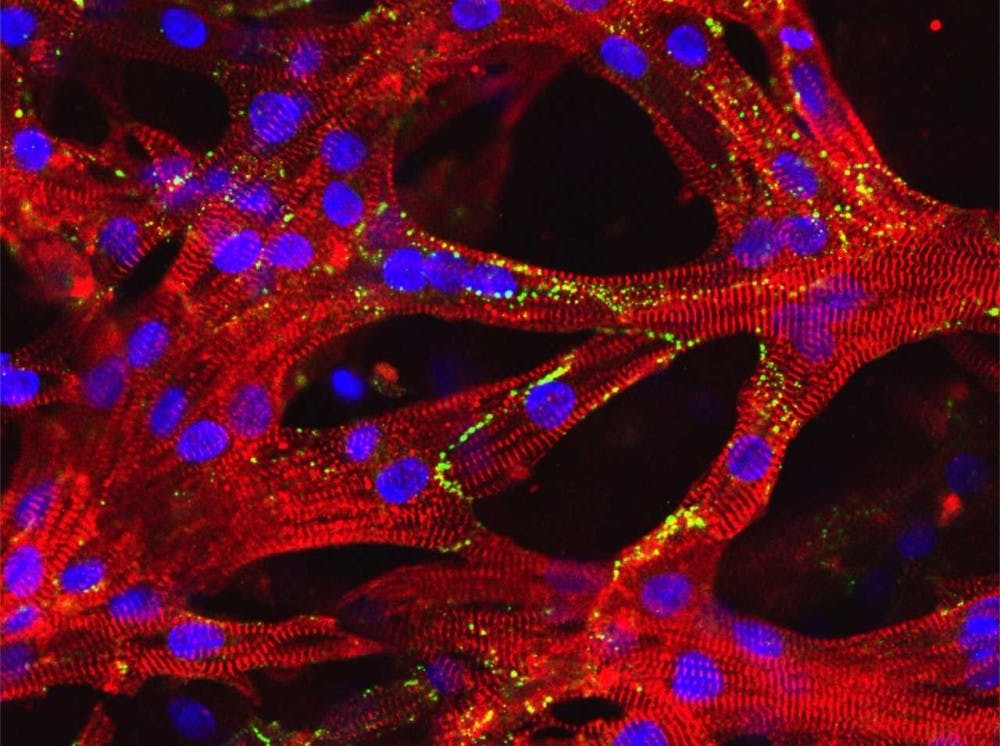Researchers at Duke University have created an artificial human heart muscle tissue that can be used to help treat heart attack patients. According to its creators, the tissue piece is the largest of its kind so far and is large enough to be used as an alternative to costly heart transplant surgeries.
Nenad Bursac, a professor of biomedical engineering at Duke and one of the creators of the artificial tissue, said scientists have been working toward this milestone for 20 years, first using mouse cells before moving to stem cells.
“We actually made a human heart muscle tissue in a dish,” he said. “During a heart attack, there are hundreds of millions of cells in the heart that die, so the size of a tissue that could be used to potentially replace these dead cells needs to be large enough, especially for human hearts.”
Li Qian, a professor of pathology and laboratory medicine at UNC, believes the research done at Duke represents a breakthrough because new cardiac tissue can now be generated and used to treat injured hearts. She said this approach could compliment her own research in the same field.
“We are also trying to fix injured hearts, but instead of replacing a scar on the injured heart, we are trying to convert the scar directly into heart muscle cells using what we call a reprogramming approach,” she said. “Eventually I think those approaches will probably compliment each other and can serve different purposes for different scenarios or different disease conditions.”
Bursac said when a person has a heart attack, up to a quarter of their heart muscle cells can die. He said the rest of the cells continue working but slowly deteriorate, as they have to work much harder than before. This strain can be reduced with the help of the newly created tissue piece.
“The idea is that the patch would electrically and mechanically integrate with the recipient heart which means it would work together with the heart and help the heart function,” he said.
Bursac said there are other treatments for heart attack patients, but they cannot reverse the disease and instead only slow the progression.
“Ultimately, when everything else fails, the heart is in such a bad condition that only a heart transplant can be done,” he said. “Heart transplants are very expensive, very complicated and we always have a shortage of donors for heart transplants. If successful, this therapy would basically eliminate the need for any heart transplants. The hope is that we would either halt progression of the disease or potentially even reverse it.”



